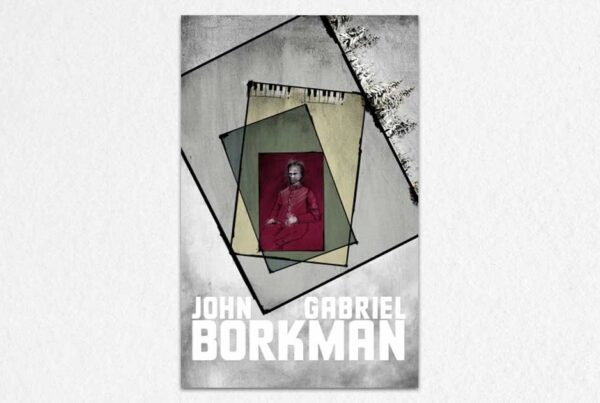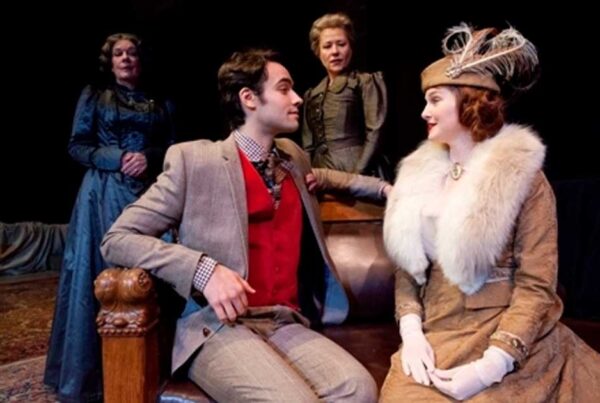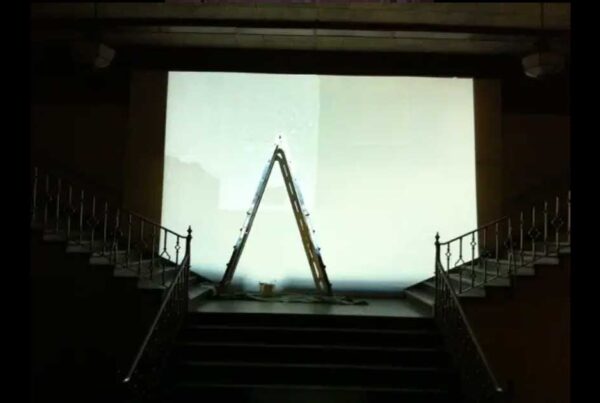When I was first asked to design John Gabriel Borkman, I started with my usual process: give the script a read-through and sketch ideas as I go. What I found in the text was as close to a perfectly described soundscape as any playwright could provide. Ibsen’s prose is, in itself, musical and flows with passion and depth parallel to his compositional contemporaries. Beyond that, he alludes to very specific aural imagery: the sound of iron ore desiring to be set free from the earth, a haunting danse macabre, a wolf padding in its cage. In that respect, the show seemed to almost design itself, but the challenge we faced in creating a soundscape was how to capture those beautifully turned phrases in actual sound. More so than any show I’ve done prior, I spent countless hours collecting samples of metal/wind/fire/rocks/bells to have an immensely large pallet from which to draw in order to compose sounds that were as human as the actors on the stage. As a true lover of music, director Marty Giles was a great collaborator in the design process, able to offer just enough of a suggestion to spark the perfect cue or the perfect suggestion for the danse macabre.
 While Ibsen mentions the piano as Frida’s instrument, we soon came to love the violin for her and found it ideally suited for this production. The cadenza, initially (per Ibsen’s text) used as a dramatic element in the end of Act I, took on its own character in both my design and the structure of the play itself. As a transition between Acts I and II, we were able to really explore the macabre nature of the play outside the text with Frida’s solo struggle against the instrument to which she’s been attached. As we lived with the design for a while, it became clear that the cadenza was beginning to function as a Wagner-influenced leitmotif for Borkman, underscoring his tumultuous escape out into the storm and inevitably serving as his epitaph.
While Ibsen mentions the piano as Frida’s instrument, we soon came to love the violin for her and found it ideally suited for this production. The cadenza, initially (per Ibsen’s text) used as a dramatic element in the end of Act I, took on its own character in both my design and the structure of the play itself. As a transition between Acts I and II, we were able to really explore the macabre nature of the play outside the text with Frida’s solo struggle against the instrument to which she’s been attached. As we lived with the design for a while, it became clear that the cadenza was beginning to function as a Wagner-influenced leitmotif for Borkman, underscoring his tumultuous escape out into the storm and inevitably serving as his epitaph.
As with every Quantum show, the space provides so much inspiration in addition to its own set of challenges. When we first toured the room, it was nothing but a glass-and-brick echo chamber, but thanks to Tony Ferrieri’s beautiful set and the structure provided by RJ Romeo and his crew, it became a wonderfully treated and acoustically superb environment, full of nuances that can only result from the collaborative takeover of such a room (sit up high and listen for the perfect natural reverb of the space any time Borkman or Ella shouts: a first-rate ‘Quantum Moment’).
From the integration of the violin cadenza, to the use of anvils, electricity, and wind, the sound design for John Gabriel Borkman became a pseudo-Wagnerian gesamtkunstwerk and an experience I will certainly treasure for the rest of my career. Many thanks to the talented Kathleen Andrews for recording the danse macabre and for the cast, crew, design team, and Marty for making this such a memorable production.
-Ryan McMasters, Sound Designer: John Gabriel Borkman




